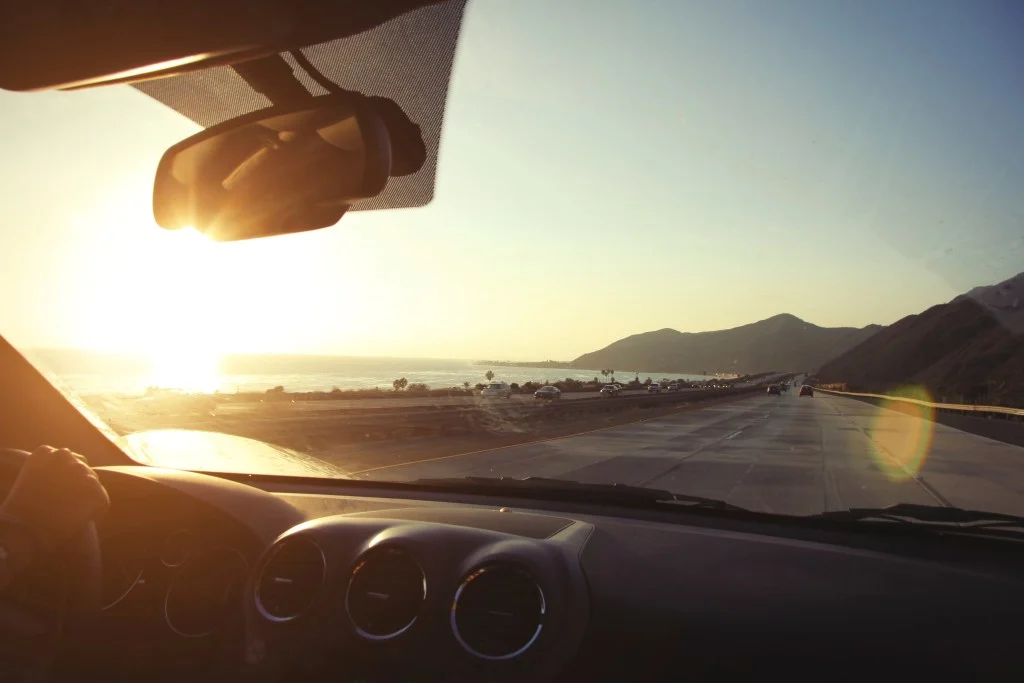The Pacific Coast Highway is one of the most beautiful roads in the country. The jagged cliffs and ocean views are nearly impossible to beat.
However, the Pacific Coast Highway can be a nightmare for many visitors. We’ve compiled five reasons we think it’s a good idea to avoid it at all costs. Let’s dive in!
What Is the Pacific Coast Highway?
The Pacific Coast Highway, which drivers also know as State Route 1 and the PCH, is a stretch of highway that runs 656 miles along California’s coast. The road hugs the coast so tightly that you’ll hold your breath in some sections. Many small towns along the route exist due to the constant flow of tourists to the area.
Construction on the highway began in 1919 with three temporary prison camps from San Quentin Prison, providing labor. Many prisoners had their sentences reduced in exchange for working on the route.
The terrain wasn’t ideal for building a road as it involved 33 bridges, including the most famous bridge on the highway, Bixby Rainbow Bridge in Big Sur.
The area frequently experiences rock and mudslides, especially during the rainy season. These weather occurrences can temporarily shut down the highway with little warning. There have been more than 55 complete shutdowns of the highway, including one closure that lasted from May 2017 to July 2018.
Where Does the Pacific Coast Highway Start and End?
The Pacific Coast Highway starts in Southern California, south of San Juan Capistrano. The highway runs 656 miles north, meeting U.S. 101 in Leggett, California.
The route travels over some of California’s most breathtaking landscapes. If you want to experience picture-perfect coastal views, the PCH never disappoints.

What Is the Prettiest Part of the Pacific Coast Highway?
While the entire Pacific Coast Highway is remarkable, the highlight for many is the Big Sur region. Big Sur is a rugged and mountainous section of the road that runs from Carmel to San Simeon. It has some of the most impressive cliffs and viewpoints along the Pacific Coast. You’ll also find hotels, restaurants, and even wellness resorts enhancing the experience.
While Big Sur may be the icing on the cake for many, the drive along the Pacific Coast Highway will leave you speechless. Between the rolling hills and crashing waves, there’s so much to see that your brain will have trouble processing it all. You’ll feel like you’re living in the middle of a picture or movie as you watch the landscapes change.
Pro Tip: While in Big Sur, spend the night at one of these Magical Big Sur Campgrounds.
Is It Hard to Drive the Pacific Coast Highway?
Driving the Pacific Coast Highway can be very challenging. The road is windy, and traffic can be overwhelming in some areas, especially during the peak tourist season. Cars are constantly coming and going from roadside viewpoints, and many drivers take their eyes off the road for far too long while taking in the views while driving. Accidents are relatively common along the highway because the road is very narrow in many sections.
The road can be very challenging for those suffering from motion sickness. The road has numerous turns throughout the route that require drivers to change directions constantly. You may need medicine or motion sickness aids as the drive can be overwhelming. Making frequent stops to take in the views may be the best way to ward off ill feelings.

5 Reasons to Avoid the Pacific Coast Highway
If you’ve seen pictures of videos from others traveling the Pacific Coast Highway, you likely immediately added it to your travel bucket list. We think it’s one location everyone should experience at least once. However, there are a handful of reasons you might want to consider avoiding this highway. Let’s take a look!
Everything Is Expensive
If you think things are expensive where you live, you should see the towns along the Pacific Coast Highway. Almost everything along the Pacific Coast Highway comes with a premium price. Gas, lodging, and food are all astronomically expensive.
Gas prices typically run $1.50+ per gallon above the national average, and lodging can cost a couple of hundred bucks per night. Even attempting to save money by camping can easily cost you $100+ per night. Snagging a reservation for lodging can be challenging, even at these prices.
It’s best to pad every budget category if you’re planning a trip along the Pacific Coast Highway. Everything will likely cost you more than you expect. However, many see these premium fees as the price you pay to enjoy the views and experience that the PCH offers.
Shutdowns Occur
Shutdowns can occur along the Pacific Coast Highway with little notice. Heavy rains can hit the area and cause rock and mudslides. In May 2017, a five million cubic-foot rock/mudslide destroyed a broad section of the highway. Removing the debris was a monumental task, but the state had to rebuild the highway. It resulted in the highway closing from May 2017 to July 2018.
More recently, the highway closed on January 29, 2021, due to a section of the road collapsing during a heavy storm. It took 30 days to remove the debris and 56 additional days to construct the new highway. The highway reopened on April 23, 2021. There’s no way to tell when the next storm will hit and close down the route!

It Can Be Dangerous
Driving the Pacific Coast Highway can be incredibly dangerous. The road is very curvy, and some drivers get easily distracted by the beautiful landscapes surrounding them. Driving the road during low visibility situations like rain, fog, or darkness can significantly increase the dangers. There have been some rather gruesome and infamous accidents along the highway throughout the years.
The celebrity Caitlyn Jenner was in an accident along the highway in 2015. While Jenner was not at fault or harmed in the accident, several other drivers were injured, and a 70-year-old woman died due to the accident. Anyone driving along the highway should take extreme caution and pay attention to the road.
Prepare for Motion Sickness
The road is dangerous and will likely induce motion sickness for drivers or passengers. If you suffer from motion sickness, take medication or use aids to help control it.
There are many stretches of highway where you’ll constantly be maneuvering around curves in the road. Some who rarely experience signs of motion sickness will discover that the road challenges their body’s ability to handle the constant motion.
It Can Be Very Crowded
The Pacific Coast Highway stays relatively busy year-round and can get extremely crowded in sections. Finding parking at some of the best roadside viewing spots can be challenging. You may find that you can’t stop as often as you like because no parking spots are available.
Some of the most crowded places are in the Big Sur region. However, many small towns along the highway will be busy during meal times.
Pro Tip: Use our Pacific Coast Highway Road Trip Guide to make planning your drive easy.
Consider Avoiding the PCH
While you may have the Pacific Coast Highway on your bucket list, it may be best to consider avoiding it. It can be a very stressful experience to navigate a challenging road while battling other drivers. If you insist on driving the PCH, we suggest giving yourself plenty of time to plan your trip and make reservations to ensure you have a place to stay.
Travel from September to November or January through April to avoid the massive crowds during the holidays and summer. If not, you’ll wish you had avoided the PCH altogether.
Will you risk a drive through the PCH? Tell us your thoughts in the comments!
Discover the Best Free Camping Across the USA
To be honest with you, we hate paying for camping. There are so many free campsites in America (with complete privacy).
You should give it a try!
As a matter of fact, these free campsites are yours. Every time you pay federal taxes, you’re contributing to these lands.
Become a FREE CAMPING INSIDER and join the 100,000 campers that love to score the best site!
We’ll send you the 50 Best Free Campsites in the USA (one per state). Access the list by submitting your email below: